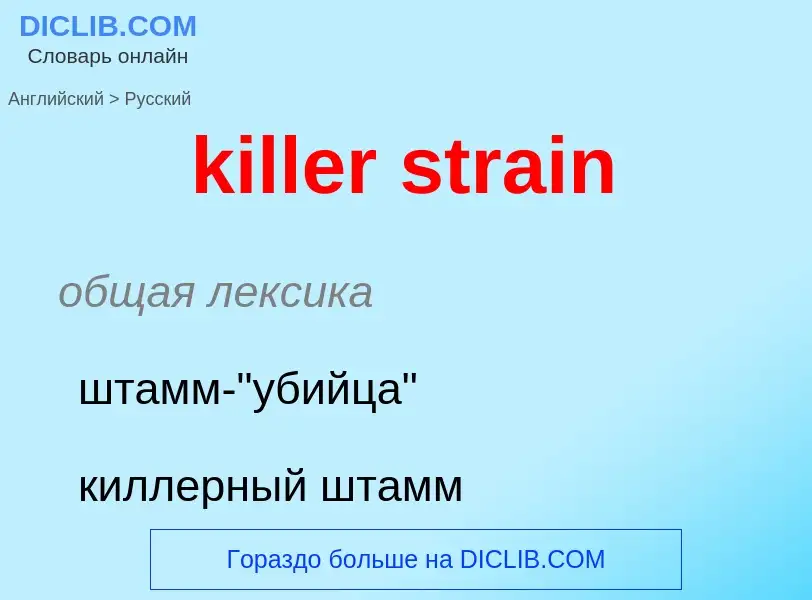Перевод и анализ слов искусственным интеллектом ChatGPT
На этой странице Вы можете получить подробный анализ слова или словосочетания, произведенный с помощью лучшей на сегодняшний день технологии искусственного интеллекта:
- как употребляется слово
- частота употребления
- используется оно чаще в устной или письменной речи
- варианты перевода слова
- примеры употребления (несколько фраз с переводом)
- этимология
killer strain - перевод на русский
общая лексика
штамм-"убийца"
киллерный штамм
['kilə]
общая лексика
орган
служащий для убивания добычи
хищник
косатка (Orcinus orca)
"убийца" (штамм парамеций, выделяющий в культуральную среду вещества, убивающие других парамеций)
(клетка-)киллер
клетка-убийца
гербицид
глушитель
ограничитель
поглотитель
машиностроение
подавитель
существительное
общая лексика
убийца
хорошая приманка
наживка (для рыбной ловли)
(-killer) как компонент сложных слов, обозначающих средство или вещество для уничтожения чего-л.
американизм
наёмный убийца
бандит, гангстер
разговорное выражение
что-л. производящее сильный эффект
что-л. сногсшибательное
потрясающее
бомба
сенсация
профессионализм
почтовый штемпель (для гашения марок)
военное дело
средство поражения
физиология
киллер (лимфоцит)
зоология
дельфин-касатка
синоним
Определение
Википедия
In continuum mechanics, the infinitesimal strain theory is a mathematical approach to the description of the deformation of a solid body in which the displacements of the material particles are assumed to be much smaller (indeed, infinitesimally smaller) than any relevant dimension of the body; so that its geometry and the constitutive properties of the material (such as density and stiffness) at each point of space can be assumed to be unchanged by the deformation.
With this assumption, the equations of continuum mechanics are considerably simplified. This approach may also be called small deformation theory, small displacement theory, or small displacement-gradient theory. It is contrasted with the finite strain theory where the opposite assumption is made.
The infinitesimal strain theory is commonly adopted in civil and mechanical engineering for the stress analysis of structures built from relatively stiff elastic materials like concrete and steel, since a common goal in the design of such structures is to minimize their deformation under typical loads. However, this approximation demands caution in the case of thin flexible bodies, such as rods, plates, and shells which are susceptible to significant rotations, thus making the results unreliable.

